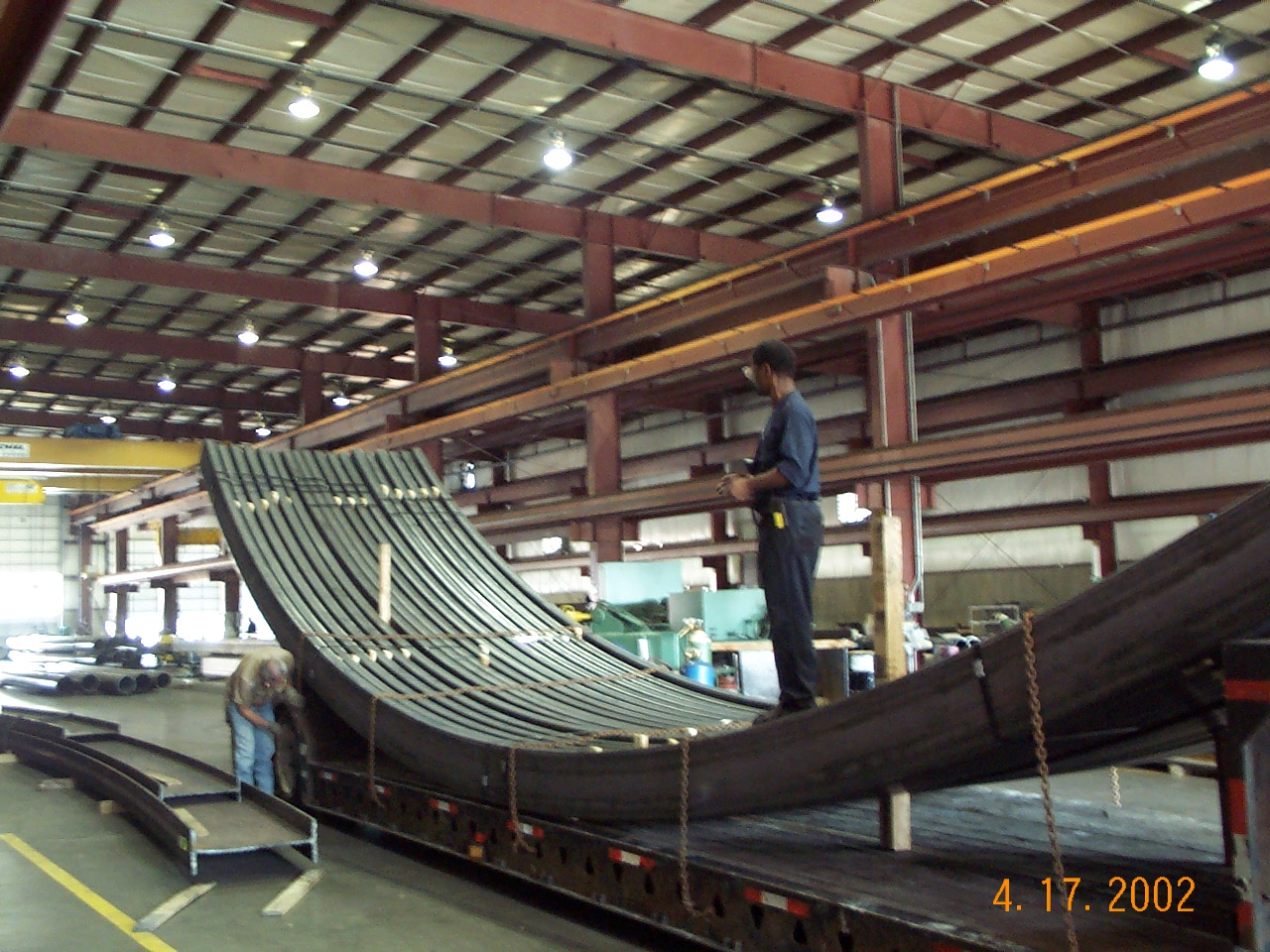Curved steel requires much the same handling and transportation needs as straight steel. However, there are a couple of specific shipping issues that are unique to curved steel. One issue that is unique to rolled structural steel is the varying space requirement. The radius, degree of the pitch (for a circular stair stringer), and the length and size of the material determine the weight distribution and space needed on a flat bed. For example a 65’ long W36 beam that is cambered will ride normally on a stretch trailer. This changes when the material is rolled to a radius significantly greater than a camber. On these pieces, the weight lies on the center of the arc meaning multiple pieces of this material will cause the load to tilt. The result is less weight can be loaded on the trailer requiring more trucks, which will increase the shipping costs.
Another dynamic to shipping rolled structural steel is the variety of shapes which can be produced. Reverse curves, circular stair stingers and other helically bent material can require more room but be lighter in weight creating the false impression of a less-than-truck-load requirement when in fact a full truck load is necessary. This light-but-large issue can also create the need for an over-width permit even though the weight is far less than a truck can carry. There are instances when a piece of material which has a long arc length and a tight radius can be tilted to reduce the width of the load. Tilting is only possible, though, if the total weight of the piece(s) is under 2000 pounds. Above this weight there is a safety factor to be considered when supporting it above the truck bed.
There are challenges to transporting curved steel; however, with a team of expert loaders a company can achieve safe, timely, and cost-effective shipping.








